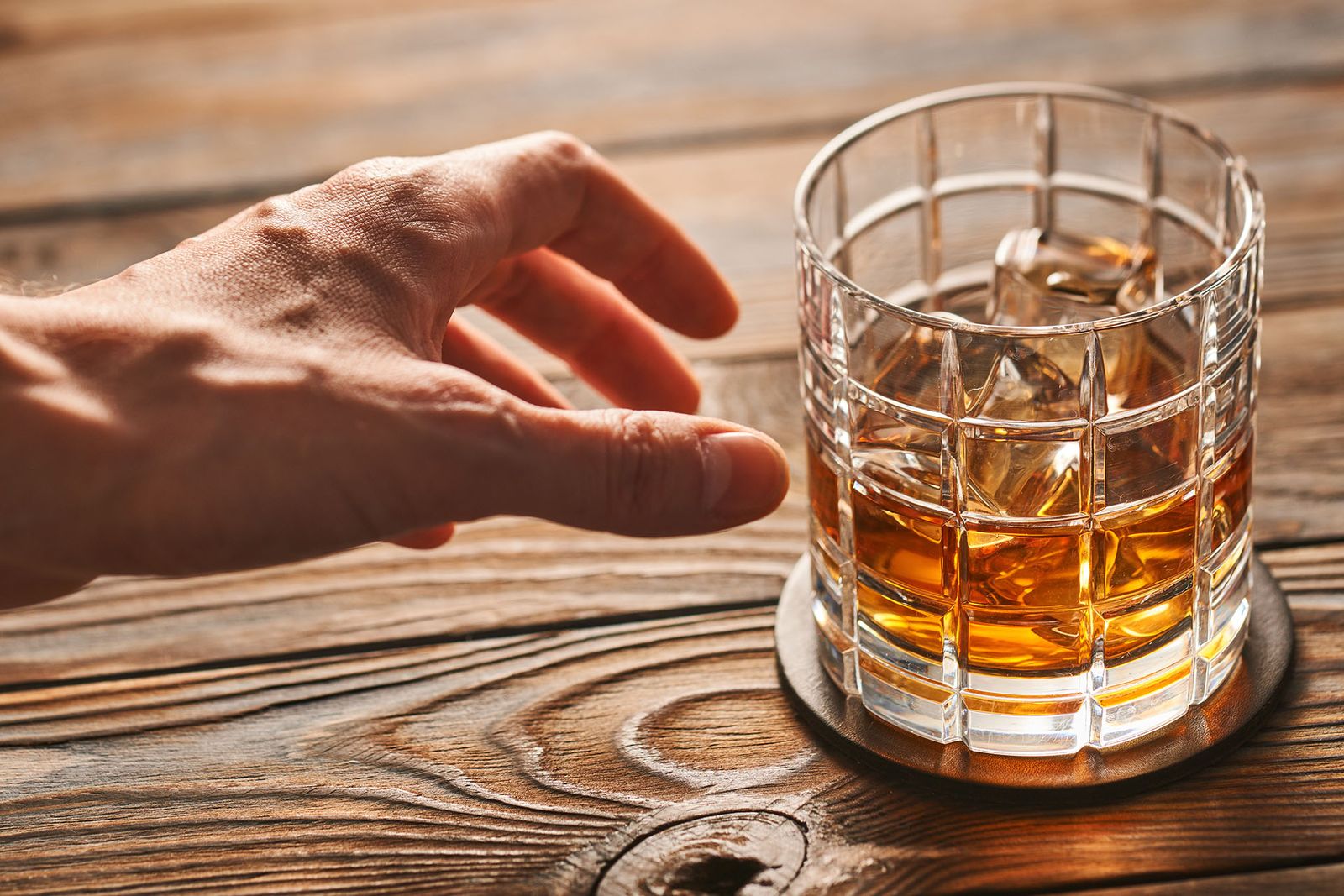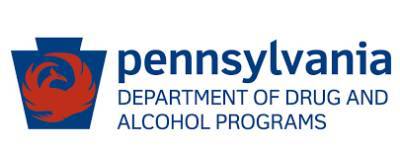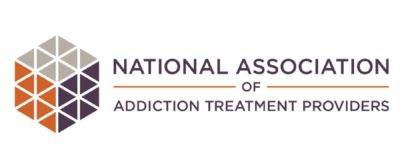What Are The Stages of Alcoholism?
![]() | 4.9 Google Reviews
| 4.9 Google Reviews
![]() | 4.9 Google Reviews
| 4.9 Google Reviews
Peace Valley Recovery is located in Bucks County, Pennsylvania. Our mission is to provide patient-centered care that focuses on healing and recovery from addiction. This blog provides information, news, and uplifting content to help people in their recovery journey.
Alcoholism doesn’t develop in a day. It isn’t something that comes about overnight. In reality, alcohol addiction is a progressive condition. What starts as casual drinking advances into dependence and addiction over time. The majority of people who struggle with alcohol addiction, or alcohol use disorder (AUD), took months or years to reach that point.
Additionally, no two individuals have identical reasons that lead them to develop alcohol use disorder. Despite the variation in specific causes and timeframes from person to person, the disease itself follows a pattern.
If you or your loved ones need help to identify the signs of problem drinking, four stages of alcoholism have been identified: pre-alcoholic, early alcoholic, chronic alcoholic, and end-stage alcoholism. These categories were developed because it’s vital to help people understand alcoholism as an illness rather than a moral failing.
If you can identify with one or two stages, please understand that alcoholism is a progressive disease. People rarely spend an indefinite time in the early stages of alcoholism; it almost always progresses eventually.
Additionally, the DSM 5 journal indicates 11 diagnostic criteria for determining the presence of an alcohol use disorder. Alcohol abuse of any kind puts people at a greater risk of developing more serious problems over time. Someone who experiences even 2 of the 11 criteria qualifies as having a mild disorder. 6 or more criteria denote a chronic alcohol use disorder, otherwise known as alcoholism.
What does the progression through the stages of alcoholism look like?
The History of the Alcoholism Research
Alcohol abuse and alcohol addiction are not new conditions. People who struggle to control their consumption have likely existed for as long as alcohol has been around. The public understanding of alcohol addiction, however, is a newer concept. Knowledge surrounding the causes of alcoholism was still scarce until the mid-1900s.
Little research on alcohol and alcohol addiction existed in the early 1900s. There were plenty of people who couldn’t control their drinking but doctors couldn’t explain why at the time. The disease concept of alcoholism hadn’t yet been introduced. Many thought that drinking problems were the result of weak willpower or a lack of self-control.

The field of alcohol science progressed further after Prohibition was repealed in the 1930s. Researchers conducted more studies to help them learn and understand why, regardless of the consequences, some people cannot control or stop drinking. This new phase of research laid the groundwork for how we understand alcohol addiction today.
The Origins of the Stages of Alcoholism
Morton Jellinek was a scientist whose research helped form a better understanding of alcohol addiction today. In 1946 he published a paper on the progressive nature of alcoholism based on a small study of members of Alcoholics Anonymous. He proposed the idea that problem drinking follows a common trajectory through various stages of decline.
Throughout the following years, Jellinek conducted another study on a wider sample size which led to another piece. He published a follow-up paper in 1952, “Phases of Alcohol Addiction,” that built upon his original ideas. He outlined the unique stages of drinkers categorized by their drinking behaviors.
Jellinek looked at the way alcoholics started in the pre-alcoholic stage, drinking in a casual, social manner. They drink socially with friends or while out for dinner. As they continue drinking, though, they move from a point where their reasons for drinking are no longer social but psychological. Whether they realize it or not, they’re beginning to lose control of their drinking. If they do not stop drinking, they continue progressing to the point of alcohol dependence and then finally to the point of chronic alcohol use.
Jellinek’s studies and publications eventually led to the formation of the Jellinek Curve. It illustrates the symptoms seen during a person’s progression through the stages of alcoholism. The four main stages include:
- Pre-Alcoholic Stage
- Early-Stage Alcoholism
- Middle Alcoholic Phase
- End-Stage Alcoholism
His contributions helped frame the way the medical community understands alcohol addiction to this day. Continue reading to learn more about the four stages of alcoholism.
Pre-Alcoholic Stage
The pre-alcoholic stage occurs before alcohol is ever a real problem. It’s difficult to identify because alcohol has yet to cause any problems and drinking has not become compulsive. Even those in the pre-alcoholic stage are unlikely to recognize that their drinking may eventually progress into something serious.
The way alcohol interacts with the body and mind is complex. It mimics certain chemicals, GABA and glutamate, that the brain naturally produces and are required for proper functioning. The former causes people to relax while the latter is excitatory and makes them more active.
The more a person drinks, the more their body becomes dependent on ethanol to release these neurotransmitters instead of releasing them naturally. This is how physical dependence on alcohol develops.

The pre-alcoholic stage is a formative stage; people go in one of two directions. Those who begin using alcohol as a tool someone uses to unwind after a long day, bolster themselves in social situations, or help them fall asleep progress into the next stage of alcoholism. Those who find alternatives to drinking either stay in the pre-alcoholic stage or move away from drinking altogether.
How to Spot Someone in the Pre-Alcoholic Stage
It’s often difficult to determine whether someone is in the pre-alcoholic stage. Their drinking hasn’t veered far from regular social drinking. People in the pre-alcoholic stage may enjoy drinking more frequently than those around them but it isn’t overtly noticeable in most people.
These drinkers have a drink in their hand at most or all social gatherings. You might notice it if they use it as their go-to way to unwind after a challenging day or long week. If they regularly rely on alcohol as a coping mechanism, can’t bear to face a social gathering without a drink, or need alcohol to relax, this could be a sign they’re in the pre-alcoholic stage. Seeking treatment during the pre-alcoholic stage is possible but is highly unlikely.
Signs of the pre-alcoholic stage:
- Relying on alcohol to unwind or relax
- Needing a drink to engage in social situations
- Using alcohol to cope with uncomfortable feelings or emotions
Early-Stage Alcoholism (Prodromal)
Early-stage alcoholism, or the prodromal phase, is when people begin binge drinking regularly and may even black out occasionally. This behavior may be a sign of experimentation with alcohol gone too far, especially in the case of adolescents or young adults. If their drinking continues, though, and they keep drinking past a certain point, they’re showing signs of early-stage alcoholism.
Binge drinking is characterized by the consumption of around four drinks within two hours for women and five drinks within two hours for men. If this is a normal amount for your loved ones, it’s time for them to seriously reconsider their drinking habits. Enjoying the sensation of rapid onset drunkenness and drinking to seek inebriation as quickly as possible is dangerous and may indicate a deeper problem.
Individuals in this stage may not be drinking every day or even every week. However, they still use alcohol frequently and can’t imagine a “good night out” without it. They drink heavily under the guise of “having a good time with friends” or “relaxing after a long week at the office.” Regardless of their reasoning, though, regularly drinking to excess primes the mind and body for the development of a more serious problem with alcohol later on.
Looking for Signs of Early-Stage Alcoholism
Early-stage alcoholism is easier to notice than the pre-alcoholism stage. Your friend or family member in early-stage alcoholism will regularly binge drink or drink to the point of blacking out. They’ll likely joke about their blackouts or mention they won’t drink that much again. However, they’ll inevitably drink that much again not long after. Over time it becomes a cycle of binge drinking, blacking out, swearing to cut back, and then starting again.
If you notice they continue drinking heavily and blacking out, you have a right to be concerned. Keep an eye on their drinking behaviors to see whether they progress further. Even if they never progress past this stage, regular binge drinking is not a healthy way to consume alcohol.
Signs of early-stage alcoholism:
- Regular binge drinking
- “Blacking out” (memory loss caused by drinking)
- Difficulties controlling the amount they drink
- Swearing they’ll cut back or stop but having troubles doing so
Middle Alcoholic Phase
During this stage, your condition may become evident to friends and family, although some people can become highly adept at hiding problem drinking. One of the main issues with this disease is how easy it becomes to lie to yourself as well. If you’re in this phase, you’ll often downplay the amount you drink and find ways of explaining away the behavior. You may start to experience consequences at work or school due to your habit and find yourself regularly hungover and craving more alcohol.
Signs such as drinking at work, while looking after children or when driving are indicators of this stage. You’ve likely become more irritable, and alcohol may start to affect you differently. You’ll need to drink more to achieve the same effects you used to feel and often pass out from alcohol. Changes in your body such as facial redness, stomach bloating, shaking, sweating and memory lapses start to affect you.
Identifying Someone with Middle-Stage Alcoholism
The further someone’s drinking progresses, the easier it becomes to notice their lack of control. Middle-stage alcoholism is when their drinking problem reaches more serious levels. Clear examples of progressive alcoholism include placing drinking ahead of their family, their job, or their education.
Treatment is most beneficial for those at the point of middle-stage alcoholism. They haven’t reached a place where their health declined too far and they can make some extreme changes in their lives. Attending alcohol rehab at this stage will be incredibly beneficial.
End-Stage Alcoholism
In this phase, the effects of long-term alcohol abuse will start to become apparent. You might have tried and failed to stop or cut down drinking several times, too. Alcohol consumption becomes an all-day affair, and your priorities change to facilitate drinking as the most important aspect of your life. If you’ve lost your job or you’re in financial trouble, the sadness and worry associated with these life events could make the situation worse.
Paranoia is frequently seen during this phase. Some people — known as functioning alcoholics — can still maintain their life during this phase, but this is rare and likely to lead to liver damage or other alcohol-related illnesses. If you feel like your drinking problem is chronic but your life isn’t falling apart, don’t continue down this dangerous path. This disease is progressive, and your health will eventually bear the brunt.
What to Do When Someone Has End-Stage Alcoholism
End-stage alcoholism is the most serious point to reach. It’s evident when someone is at the end-stages of their alcohol addiction. They see severe impacts on their health, relationships, employment, finances, and overall satisfaction with life.
Someone who is at the point of end-stage alcoholism needs treatment as soon as possible. If they choose not to address their drinking problem, they’re likely to drink themselves into an alcohol-induced illness, such as cirrhosis or cancer.
Help is Available During Every Stage of Alcoholism
The stages of alcoholism are a helpful tool to help determine the progression of alcoholism but they are by no means a rule. They outline the typical trajectory of alcoholism to reveal the steady decline from social to chronic alcohol use.
The Jellinek Curve doesn’t end there, though. It also includes the journey of alcohol addiction and into recovery. He outlines the ways people can recover from their problematic drinking behaviors. And you can shift from the downward spiral of alcoholism and toward the upward trajectory at any point.
There is no such thing as not being “alcoholic enough.” There is no reason to wait until you feel like your drinking is bad enough to warrant treatment. You can ask for help at any point, whenever you realize your drinking has gone too far.
Help is available for you no matter which stage of alcoholism you’ve reached. Thousands of people find a solution to their drinking through alcohol rehab each year. Alcohol addiction treatment teaches you more about the nature of your condition and provides you with the tools you need for long-term recovery.
If you can relate to the issues outlined above or know someone who falls into any of the four categories, medical treatment in a rehabilitation facility is the most effective path to long-term recovery. To find out how to get the help you need, speak to one of Peace Valley Recovery’s addiction specialists at 267-662-2462.
Sources:
- National Institute on Alcohol Abuse and Alcoholism: https://www.niaaa.nih.gov/publications/brochures-and-fact-sheets/understanding-alcohol-use-disorder
- Wikipedia: https://en.wikipedia.org/wiki/Alcoholism#History
- National Institute on Drug Abuse: https://www.drugabuse.gov/drug-topics/addiction-science
- SciHi Blog: http://scihi.org/morton-jellinek-alcoholism/
- Journal of Studies on Alcohol and Drugs: https://www.jsad.com/doi/pdf/10.15288/jsad.2016.77.375
- US National Library of Medicine: https://www.ncbi.nlm.nih.gov/pmc/articles/PMC2911355/
- National Institute on Alcohol Abuse and Alcoholism: https://www.niaaa.nih.gov/alcohols-effects-health/alcohols-effects-body
- U.S. Department of Health & Human Services: https://pubs.niaaa.nih.gov/publications/aa77/aa77.pdf
- National Institute on Alcohol Abuse and Alcoholism: https://www.niaaa.nih.gov/alcohol-health/overview-alcohol-consumption/moderate-binge-drinking
- Mayo Clinic: https://www.mayoclinic.org/diseases-conditions/alcohol-use-disorder/symptoms-causes/syc-20369243
- OPM.gov: https://www.opm.gov/policy-data-oversight/worklife/reference-materials/alcoholism-in-the-workplace-a-handbook-for-supervisors/
- National Institute on Alcohol Abuse and Alcoholism: https://www.niaaa.nih.gov/alcohols-effects-health/alcohols-effects-body
You May Also Like to Read
Youth Drinking in Pennsylvania
Youth Drinking in Pennsylvania Authored by Chris Schumacher, | Medically Reviewed by Peace Valley Recovery Editorial Staff, [...]
The Non-Alcoholic Beverage Movement: Is It Helping or Hurting?
The Non-Alcoholic Beverage Movement: Is It Helping or Hurting? Authored by Chris Schumacher, | Medically Reviewed by [...]
The Impact of Alcohol on Physical Health
The Impact of Alcohol on Physical Health Authored by Chris Schumacher, | Medically Reviewed by Peace Valley [...]








